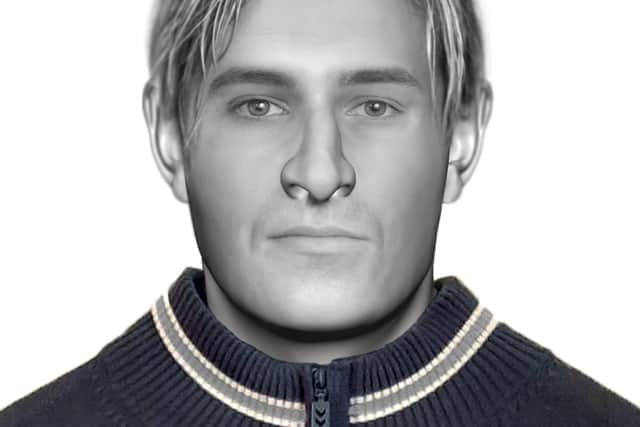Cold case Scotland: Facial reconstruction of man found in woods 11 years ago released
The human remains were discovered in remains in woodland near Balmore Golf Club, East Dunbartonshire, on October 16, 2011.
There were no suspicious circumstances surrounding the death, but despite previous appeals and extensive inquiries, police have been unable to establish his identity.
Advertisement
Hide AdAdvertisement
Hide AdIt is thought he could have been dead for up to six months before he was discovered.


In a fresh bid to solve the case, a new facial reconstruction and 3D images of the man's clothing has been released.
Investigators at the Scottish Cold Case Unit at Glasgow Caledonian University, in partnership with missing persons' charity Locate International, issued the images.
The images, produced by the University of Dundee, are being shown online alongside photos of the man's belongings and drone footage of the woods where he was found.
Forensic analysis revealed the man suffered injuries before his death, which may have affected his appearance, quality of life and gait.
It is estimated he was aged between 25 and 34, 5ft 8in to 6ft 1in tall, of slight build, white European, with light-coloured hair.
Dr Maureen Taylor, co-director of the Scottish Cold Case Unit at Glasgow Caledonian, said: "The team have been undertaking inquiries around the clothing he was wearing and his belongings, a geographical profile of the location in which he was found, and missing men from the UK and Europe.
"We know he had a chip to one of his front teeth and injuries to his nose and jaw that he sustained in the months leading to his death.
Advertisement
Hide AdAdvertisement
Hide Ad"These injuries were not only left untreated, but would have caused him significant pain.
"We also believe that he may have walked with a limp or had difficulty walking."
He was discovered wearing a blue TopMan T-shirt with a maroon diagonal stripe on the front, a blue zipped cardigan bearing the logo Greek Pennsylvania, light-coloured jeans and black waterproof walking shoes, commonly bought in Lidl.
A number of personal items, including toiletries, additional clothes, headphones, chargers, a lighter, and cigarette papers, were found in a Nike messenger type bag near his body.
Professor Lesley McMillan, co-director of the unit, which is made up of criminology students and academic staff, said: "We hope the information and images in our appeal jog someone's memory.
"Perhaps someone will recognise his clothing or his belongings and help us establish who he is.
"The Cold Case Unit has spent the last 18 months gathering as much detail as we can to progress this case.
"We greatly value the relationship we have with Police Scotland and are grateful to our colleagues at the University of Dundee for the renewed facial reconstruction and support with 3D imaging.”